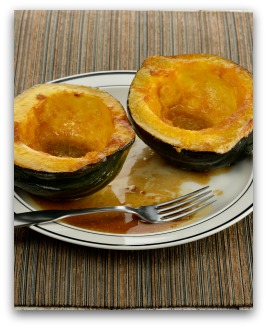How to Grow Squash ; Tips for Growing Both Summer and Winter Squash Varieties
Learn how to grow squash in your own vegetable garden.
It is easy to grow both winter and summer squash varieties when planting a garden at home.
Tips and techniques for planting, growing, and caring for squash plants when gardening.
Companion Planting Corn and Winter Squash
Examples of a time-saving technique are to plant late corn and winter squash together.
As long as you keep up with the cultivation end before the squash plants begin to run, this method conserves valuable area and maintenance requirements.
In part, squash contributes to its companion plant by helping to keep the weeds under control.
The mellow flavors of winter and summer squash are some of the joys of vine crops growing in the vegetable garden.
The two biggest problems faced in raising squash family crops which are also called cucurbits can be in finding adequate space for the sprawling vines and protection from plant diseases.
Winter squash plants such as acorn squash and pumpkins can be grown on a trellis to save precious space in the vegetable garden.
How to Grow Squash
Summer Squash and Winter Squash
Both winter and summer squash plants prefer warm growing conditions and enriched soil.
When growing winter squash, or growing summer squash, follow these simple how to grow squash guidelines for growing the best crop ever:
* Plant when the soil is at least 60 degrees F. Use covering to protect cold sensitive seedlings.
Download Free Garden Planning Worksheets, Garden Diary, Zone Chart, Or Planting Guide
* Water seedlings thoroughly.
Keep soil moist throughout the growing season.
Water the soil not the leaves to avoid transmitting diseases to the plants.
Do not handle plants when they are wet.
* Pull weeds until squash vines begin to lengthen. Spread a thick mulch of straw, hay, or leaves.
* Apply teas of manure or compost as the first fruits set.
* When vines grow to five feet, pinch off the growing tips to encourage fruit-bearing side shoots.
* By midsummer, remove remaining winter squash flowers to direct the plant's energy onto the ripening process.
* To prevent rot, put a thick mulch under fruit.
Summer and Winter Squash Plant Pests and Diseases
Squash yields can significantly be reduced from bacterial wilt, squash bugs, and/or squash vine borers.
There are several methods to keep squash in healthy production all season long.
Squash plants send out two roots at each node of the plant. The bottom one will grow into the soil during a wet spring. Encourage this action by burying both roots.
Be careful not to bury the flower stalks that also emerge at the nodes.
The re-rooted squash will make the plant more vigorous.
The extra set of roots also help against vine borers as well because the pests generally strike at the base of the central stem.
By wrapping the base of the plants with nylon stockings or row covers, you can better catch sight the borers' bright red eggs before disaster strikes.
Using these preventative measures gives you greater insurance against the loss of your crops when learning how to grow squash.
Harvesting Summer and
Winter Squash
During dry weather, harvest winter squash by using a sharp knife to cut fruit from the vine, leaving several inches of stem on the fruit.
For summer squash, pick each fruit before the blossom drops off the tip or the plant will quit producing.
Before expected frost, pick ripe winter squash and cover any remaining unripe fruit with heavy mulch.
Storing Winter Squash
Do not store bruised or washed winter squash.They will begin to spoil, and will also spoil the surrounding squash.
Dry winter varieties, with the exception of acorn squash, in the sunlight until stems shrivel and turn gray.
Store winter squash in a cool, dry location with temperatures of 45 to 50 degrees F. and 65 to 70 percent humidity.
It's easy to learn how to grow squash in your garden! Just follow our easy tips for planting and caring for your squash plants in the garden.
You Might Also like to Read:
Growing Squash









